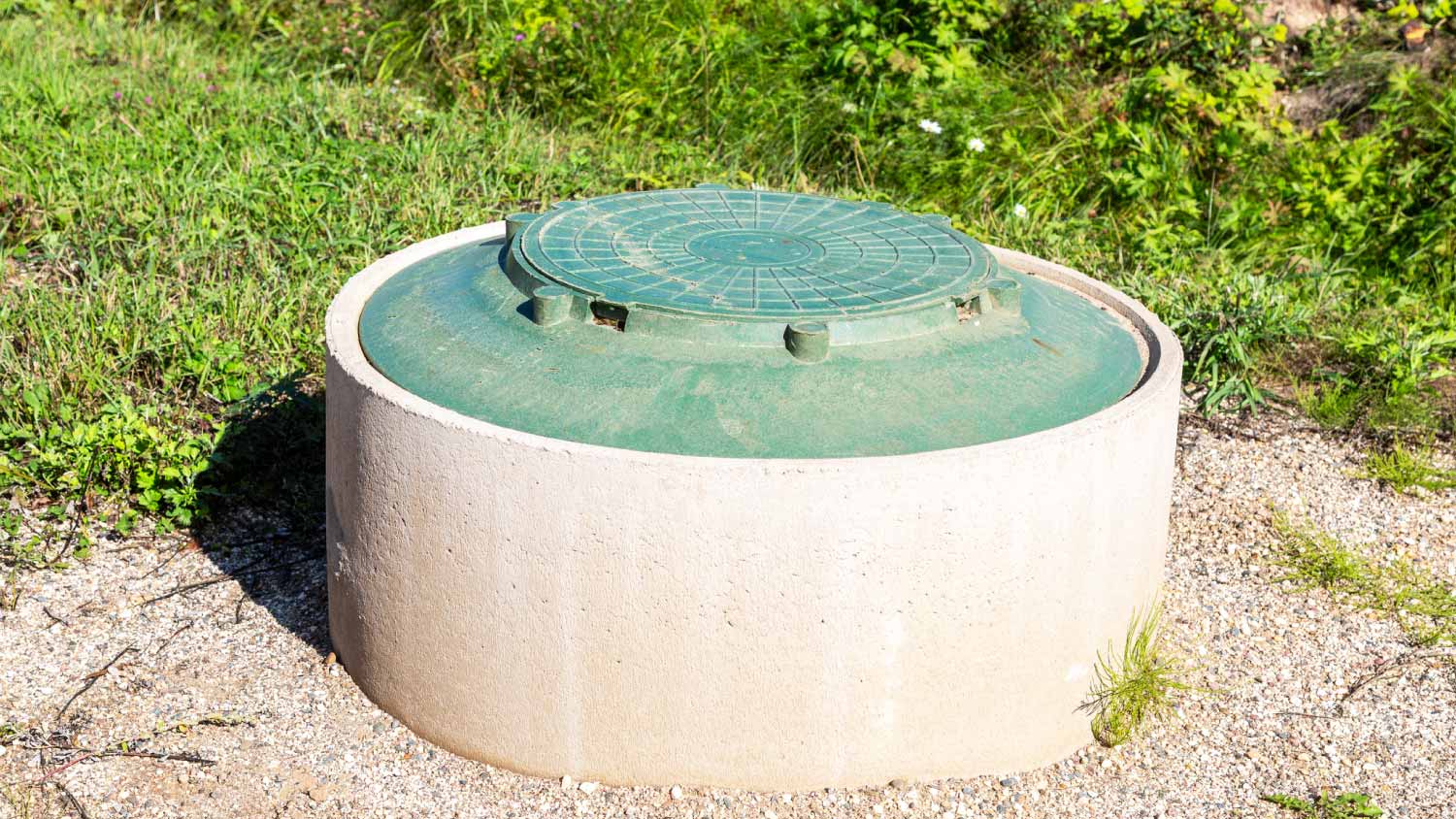
You should do a septic inspection once every one to three years to ensure you don’t have any issues. Learn about septic inspection costs before scheduling.
A clogged drain field stinks—literally


A well-functioning septic drain field properly filters and disperses wastewater from your home. Whether you’re troubleshooting a potential issue or maintaining your system, understanding how to locate, test, and care for your drain field can help prevent costly repairs. Learn how to test a septic drain field in this handy guide.
There are two crucial reasons to test a septic drain field: to ensure your septic system is functioning properly and to prevent environmental contamination. Drain fields can become clogged with sludge, grease, or buildup, causing slow drainage, backups, or complete system failure. Regular testing detects early signs of failure, allowing for timely maintenance or repairs before costly issues arise.
A failing drain field can cause wastewater to surface in your yard or seep into groundwater, posing serious health risks and environmental damage. Tests help homeowners verify that the drain field is filtering and dispersing wastewater effectively. This proactive test extends the septic system's lifespan and helps avoid expensive repairs and cleanup due to contamination.
The dry season, like late summer or early fall, is the best time to test your septic drain field. Groundwater levels are lower during this time of year and won’t interfere with results. You should also test if you notice warning signs like slow drains, gurgling pipes, sewage odors, soggy or unusually green patches in your yard, or backups in your home.
If you’ve recently had heavy rainfall or flooding, it’s a good idea to check for saturation issues. For any type of septic system that is over five years old or hasn’t been inspected in a while, scheduling a test can help catch problems early.

You can use several methods to test your septic drain field. Each one identifies issues like poor drainage, leaks, or soil saturation. Below, we’ll cover three common tests—percolation, dye, and soil probe—to help you determine the health of your system.
A dye test checks for leaks or improper drainage in a septic system. The test involves adding a non-toxic, brightly colored dye into a toilet or drain and then flushing the system with water. If the dye appears on the ground above the drain field or near nearby water sources, it could indicate a system failure, such as a clog or oversaturation. This test is used to detect leaks that may be contaminating groundwater or causing sewage to surface in your yard.
A percolation test, or perc test, measures how quickly water drains through the soil to see if the drain field is absorbing wastewater properly. You'll dig small holes into the drain field, fill them with water, and time how long it takes for the water to soak into the soil. Slow drainage indicates soil compaction, clogging, or poor absorption. Perc tests are required for new septic system installations but can also be useful for diagnosing existing drain field issues.
A soil probe test assesses the drain field's moisture levels by inserting a metal probe or auger into the soil. If there's excessive moisture, strong sewage odors, or black sludge, the drain field is oversaturated or failing. This method helps clogged or compacted areas where wastewater isn’t filtering properly. Adding this maintenance task to your list helps catch early signs of trouble.

Proper maintenance of your septic drain field keeps your entire septic system functioning efficiently and avoids costly repairs. Here are some key tips to help extend its lifespan:
Conserve Water: Excessive water use can overload the drain field. Spread out laundry loads, fix leaks promptly, and use water-efficient appliances.
Avoid Heavy Traffic: Keep vehicles, heavy equipment, and structures off the drain field to prevent soil compaction and pipe damage.
Watch What You Flush: Only flush toilet paper and human waste. Avoid flushing grease, wipes, chemicals, or anything that can clog the system.
Divert Rainwater: Ensure gutters, downspouts, and surface water drain away from the drain field to prevent oversaturation.
Limit Landscaping: Plant only grass or shallow-rooted plants over the drain field to prevent root intrusion into pipes.
Pump the Septic Tank Regularly: Pumping every three to five years prevents solids from reaching the drain field and causing blockages.
Monitor for Warning Signs: Look for slow drains, foul odors, or soggy areas in the yard.
Baby wipes and other “flushable” bathroom wipes are often not able to properly break down in your septic system. Avoid flushing any wipes down the toilet, even if they say “flushable.”
Some septic drain field tests, like the soil probe test or a basic dye test, can be done as DIY projects. These simple methods help monitor the system and catch early signs of trouble. However, they won't always give you a complete diagnosis, and improper testing techniques can get you inaccurate results.
Percolation tests provide more accurate results but are best handled by a local septic specialist. These pros understand soil conditions, drainage rates, and septic system design, and their assessment provides accurate results so they can recommend the best solution. If your septic problems are ongoing, it's time to consult a septic tank pro to inspect your septic system to avoid costly mistakes and ensure it’s working properly.
From average costs to expert advice, get all the answers you need to get your job done.

You should do a septic inspection once every one to three years to ensure you don’t have any issues. Learn about septic inspection costs before scheduling.

If it’s been there for a while, it can be hard to find the septic tank in your yard. Learn how much it costs to locate a septic tank with this guide.

Planning a big project? It might be time to ask how much it costs to get utilities on land. This isn’t a budget-friendly project, so start planning here.

How much weight can a leach field hold? To avoid damaging it, focus on items with limited weight when deciding what to put over the top of the leach field.

How deep is a septic tank, and why is it buried? Learn where to place your own septic system as well as how to maintain it and how much it costs.

A saturated leach field can lead to costly damage to your plumbing and yard. Learn how to fix a saturated leach field with this guide.